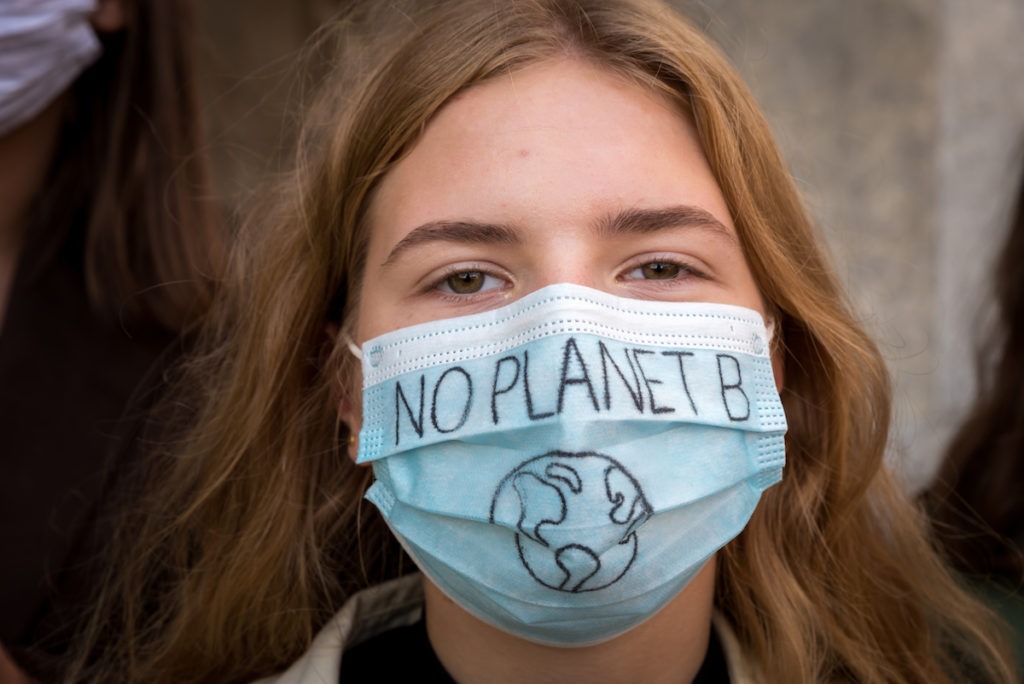Gender equality gains both locally and globally have been hit hard by the COVID-19 pandemic over the past 18 months, but that could be nothing compared to what climate change is stripping from the progress that had been made.
The latest report by the Intergovernmental Panel on Climate Change (IPCC) reveals just how dangerous that future ahead is if we fail to act now on climate change.
Most of us are already aware of this, but are just lacking some of the more specific details around what we can expect and just how much of a difference tiny increments in warming can have. Girls and young women particularly have concerns about what’s ahead, with more than half of those aged 12 to 25 nominating climate change as their number one concern facing society, according to Plan International. Last week we also highlighted research revealing that Australians are three times as concerned about climate change as they are about COVID-19.
********
Subscribe to get our weekly Women’s Health News in your inbox.
This week’s IPCC report brings together the work of 234 scientists from 60 countries along with 14,000 papers to put the numbers on what so many of us know to be true because we’ve witnessed it. The most detailed report on climate science ever released, it highlights how we are fast running out of time for keeping warming beyond 1.5 degrees — indeed, we can expect it to reach that point by 2034 or even earlier. That 1.5 degree threshold tipping point is expected to result in more serious weather events including droughts, floods, heatwaves and fires.
It is sobering news, made more difficult to read given our current predicament searching for a way out of COVID-19 and the Delta strain’s pull on priorities, media coverage and people’s personal experiences and concerns across the globe. As expected, the report appears to have been mostly, so far, ignored by the Morrison Government.
Gender Equality at Risk
The IPCC report is also a reminder of the missing piece I see over and over again on gender equality conversations in Australia: the impact of climate change on any gains made and hoped to be made around gender equality. Both internationally, and locally here in Australia.
Extreme weather events, just like pandemics, disproportionately impact the world’s most vulnerable and poor, of which 70 per cent are women. It particularly impacts those who manage the production and sourcing of food, those collecting water as well as sources of fuel for heating and cooking: again, the majority of those doing this work are women and girls.
Women face specific vulnerabilities around food security due to climate change, including losing rights around resources, taking on higher workloads if resources are difficult to access, and the significant economic impacts that result when natural disasters do occur, especially in picking up more of the caring load.
But that’s not all. Girls also face an increase in forced marriage as well as risks to their ability to obtain an education. A 2020 report from the International Union for Conservation of Nature, pulling in thousands of information sources and case studies, highlighted how food shortages have seen young girls forcibly married: with these girls becoming a “survival strategy” for families impacted by environmental disasters. It specifically shared a number of case studies from Ethiopia and South Sudan, where girls had been sold in exchange for cattle following extreme drought in these regions. The report went on to detail the devastating consequences of food scarcity: just think about the women and girls who need to walk further for collecting food or water or firewoods, and the higher chances of gender-based violence they face.
Meanwhile, expect mental health to take a further hit. The researchers of a survey of more than 5000 Australians detailing their concerns around COVID and Climate highlighting some very real fears on this space ahead: including eco-anxiety, climate disaster-related post-traumatic stress disorder (PTSD), and future-orientated despair. The highest concerns about climate change were found to be in women.
Outside of these dire global consequences on girls and women globally, what more could we expect locally? We can take some cues from COVID-19 to figure that out. We’ve witnessed what happens to women’s jobs and opportunities as well female economic security during the emergency of the Pandemic. We’ve seen how women pick up more of the domestic and carrying loads and lose jobs at faster rates than men. We’ve seen how economic stress impacts rates of domestic violence. We’ve seen how women pick up more of the caring load during rolling lockdowns. This particular emergency resulted in women’s economic participation, for the first time in years, going backwards.
So what happens next?
Climate change solutions, as well as the adaption measures that remain ahead, must include women. Women must be given the opportunity to be decision-makers on climate change.
As women take on the vast majority of food production, particularly across sub-Saharan Africa and Asia, women’s knowledge must be tapped for supporting biodiversity and conservation efforts. Women must be included in the opportunities that moving to a greener future now present: especially when it comes to new renewable energy, mitigation tasks, research and policymaking, and those jobs associated with a greener economy.
This latest IPCC report comes just months before significant global talks commence in Glasgow. Again, these conversations must intentionally include a wide mix of women from all over the planet, including Indigenous women, women with disabilities, women who are leaders in their communities and women who have direct experience with disaster management in their communities.
Meanwhile, while efforts have been made to improve diversity in the scientists included in the IPCC report, the list is still overwhelmingly male: at 72 per cent. The report also features ‘blindspots’ across regions including parts of South America, Africa and the Pacific Islands lacking the necessary data to assess things like rainfall in this report. We need better diversity across these reports and all research areas on climate change, not only to highlight specific regional information and insights but to also further outline the impact on communities.
“The alarm bells are deafening,” UN Secretary-General Antonio Guterres said on releasing this report. If they are also not deafening on the urgent need to further link climate change to gender equality conversations, then you’re not listening hard enough.
If you care about gender equality, then you need to care about climate change and consider how it’s impacting women and girls internationally. You need to care about how women are being included in the solutions and how women will be given a say and leadership roles in the new areas of work that will come as a result of the massive transition that is ahead.
Given what’s at stake for Australia, you should also take the example of COVID-19 to see how quickly rights and opportunities gained for women can deteriorate in an emergency, and how we can avoid this as we adapt to more extreme weather events in the future.
The case for some hope, I believe, is in the gender equality gains that we can make as we transition to a greener economy given the massive overhaul in work and opportunity that is ahead — as long as women are intentionally included in decision-making processes and all initiatives that will support this.
The photo above depicts a woman at a youth protest in Warsaw, in September 2020.


